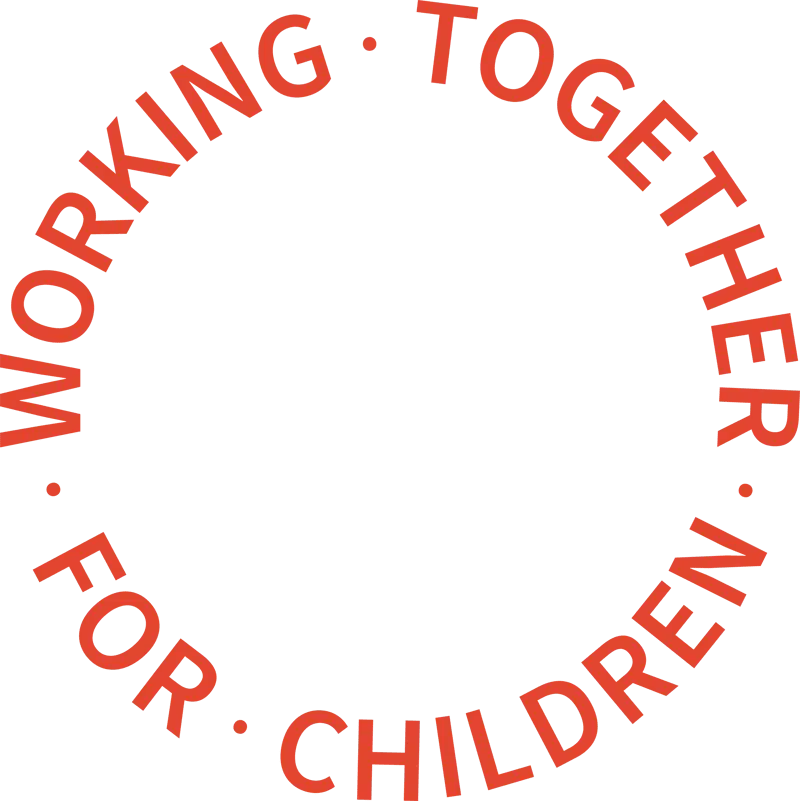A blog on advocacy for care experienced young people by Luke Rodgers.
Luke Rodgers is the Director & Founder of Foster Focus, starting his life in care - he like many other children, unfortunately, didn't feel his experiences were positive ones. After moving from foster home to foster home, living in children's homes and in and out of schools Luke found himself independent, living in a B&B at only 15 years old.
Luke wanted to make a difference to children's lives in care, he told himself that he 'didn't want other young people to experience what he had', and since has been sharing his story to a variety of audiences.
Today, he discusses how to actively encourage participation from young people:
Advocacy for young people who have experienced care is something we all strive to provide and get right. Every organisation I have met and worked with will all share passionately how advocacy for young people is the top of their agenda and how they focus on consultancy and ‘user informed’ practice to design services.
The quality of advocacy varies across the UK, some of the projects I’ve worked with are outstanding examples of innovation in advocacy and participation. The House Project sees care leavers acquire void properties, renovate them independently and take full ownership of their independence journey, with a team of individuals behind the young people supporting them if they need it. This project started with 10 houses in the first year and now works with 60 young people with 60 houses across six local authorities. Not only does this project give young people full ownership, decision-making power and a support network, it also makes financial sense. On average, it saves a local authority £165k per child, providing savings to sustain the project and repeat again and again.
Oxfordshire County Council has a co-operative community interest company that has been set up by care leavers to advocate for looked-after children, providing events for children in care and care leavers to gain information about their rights, opportunities and to speak to like-minded individuals. They are developing a peer-to-peer coaching service so care leavers can coach children in care and a buddying service where organisations can sign up to provide a ‘buddy’ to support care leavers in the workplace.
Much further afield in Argentina, care leavers have developed an app so that they can communicate with each other, share information about opportunities and events and also speak with their version of personal assistants. Taking advocacy to the digital platform and creating a modern method to communicate ensures young people can create a strong community, build relationships and be accessible when they need each other.
The common strand to all of these projects is what I believe the fundamental drive to successful advocacy is - ownership. Of course, for any authentic advocacy, we also need effective participation of young people. It’s a complex puzzle to get right, too often we fall back on the traditional children in care council asking young people to come to us, order pizza, consult on things our service has already predetermined and provide little feedback and no noticeable change. A powerless group of young people who are given the illusion of change will never provide authentic advocacy, only an opportunity for Ofsted to tick a box and convince others that we have ‘captured’ the views of young people.
So how do we get it right? I am by no means an expert, I’m just a master of trial and error and I can share with you some effective ways that I’ve seen work in the past. I believe that if we get participation right, advocacy will follow. I’ll share how to develop effective participation streams for young people and to understand what it actually means.
- Youth participation is an unchallenged orthodox. We often see participation in three forms, verbal communication, group activities and written words. This isn’t participation, its consultation, which is a form of participation. By only focusing on consultation as a method of participation we will never create an effective platform to engage young people, leading to authentic advocacy. I’m often puzzled how we have come to the unchallenged culture that participation means consultation, only young people who want to attend this medium of consultation will do so and we miss engaging with the wider population of our young people experiencing care.
- Understand your terminology. I hear a lot of words that we just use and don’t really understand what we mean by them, for example, one of the most common phrases that I hear is: ‘we must consult with young people in all decision-making that affects their lives’. What do we actually mean by this? What are the actual decisions we are referring to? I don’t think this statement is thought through and it often leaves people feeling confused and anxious because it’s just not practical. If a child needs to be safe, we will plan to make and keep them safe, we won’t consult or include them in this process, we will just make sure they are safe because that’s the right thing to do. I sometimes worry that when we include these power phrases into our practice that we hinder practice that’s right for the child, we create an anxiety in our organisation that worries that they should consult with children on everything. Our responsibility is to keep children safe, use our humanistic judgments to know when to speak with young people and ensure we explain every decision we make and the reasons why to the young person. Sometimes young people won’t like our choices, they’re going through a hard time, yet if you’re keeping them safe then in the future one can hope the young people will grow to look back and see you had their best interest at heart. I find it useful to think about consultation with a really simple question: should my decision be in the best interests of the child or in line with the child's wishes and feelings? I find it a simple and reasonable way to think about young people’s views.
- ‘We just can’t get young people to engage’. This is, without doubt, the biggest comment I hear throughout the sector, services under the illusion that they can’t get young people to engage. This builds on my first point about participation being seen as consultation - lots of young people don't want to talk about their lives, and why should they? They’ve just left their homes, come into a service that is alien to them and then we start asking them questions about it. When they don’t engage in this method we just label them as ‘hard to reach’ and ‘non-engaging’. I was given some incredible advice from an old foster carer once about relationships. She said that ‘we need to spend as much time doing things young people enjoy doing, as the amount of time we want them to spend doing things we want them to do’. We are always asking young people to come to us, join our groups, fill out our forms and we are unwilling to go into their world, like play their Xbox, go to the cinema or engage in their hobbies. We just expect young people to come to us with nothing in return.
- Stealth consultation. Following on from my latter point, our pre-set focus and strategy to engage with young people is usually through a child in care council. Although we know that this only attracts young people who are willing to engage in this way, we miss a huge group of other young people. Stealth consultation is a method which brings young people together who have similar experiences. Inviting these young people together to engage in activities that are about having fun and not consultation creates a safe and no pressured environment for them. As young people all come from similar experiences, it is highly likely that their conversations will naturally form around these, it takes only one young person to start speaking about a placement or their social worker before all the other young people start chipping in. This is an authentic conversation that is started and owned by the young people, in normal and natural communication. The role of the facilitator here is to guide the conversation and ask questions when this conversation arises and lead the conversation to help understand young people's views of the service. It is essentially creating an environment where a conversation about young people's experiences is very likely to happen and being skilled enough to ask the right questions. If you can implement change in this way or start a project to support young people, the facilitator will build huge respect and influence for these young people and will be monumental in engaging young people further.
- Remember: young people need skills. If we were to apply for a job as an adult we would most likely have to fill out an application form, hand in a CV that explains our experiences and undergo an interview to ensure we have the right skills and competencies. I’m often puzzled why when it comes to youth participation we forget this completely. To get a job as a trainer or educator in the local authority you have to have experience, however for young people to do this, they don’t have to have experience. To plan a conference or event it is useful to have Princes II or another project management qualification. Again, a young person engaging with this through ‘youth participation’ doesn't need a qualification. Too often we overlook the importance of skills and getting the right people for the job, just because you’ve had an experience in care doesn’t mean that you can speak at events and plan conferences. We are often setting young people up to fail, thinking that we can just involve them in complex and highly skilled tasks with no training. When our efforts to involve young people don’t evolve like we would like them to, we add to the culture of ‘this is why we don’t engage young people’ and overlook that young people need training and support if we are to ask them to engage in ways that require certain skills and merit.
- Top-down culture. One of the most frequent things I see (and with great sadness) is when we generate an incredible idea but there is no appetite to develop or implement this amongst the community of young people. We may have all done this at one point, we will be sat in a meeting, discussing how to support young people and an idea will form, a common one is peer-to-peer mentoring, care leavers supporting children in care. If done successfully this can be an incredible service, we are all aware of the benefits of peer-to-peer relationships. We pump time and effort into creating the idea, launch and then we have no young people interested. This leads to a frustration and eventually inhabits our appetite to generate more ideas because ‘we’ve tried it before and it didn’t work’. This is a beautifully kind mistake, we try to support children but they’re not interested in our idea. Be careful when this happens, what we might think is an incredible idea might not be what is wanted by young people, even if it would make a difference. You can take a horse to water…
- Diverse Platform. We are corporate parents, operating inside an incredibly versatile organisation. A local authority has every service, resource and knowledge under one roof to create anything and draw from a plethora of knowledge. Although I believe the concept of a ‘corporate parent’ is still being widely interpreted and understood, I feel it is a good statement to help us understand our role. Much innovation has flooded our sector, with incredible services that have deeply benefited children in care and care leavers. We have a diverse platform within our local authority from Law, HR, Marketing, Adults' Services and Children’s Services and so on, but we tend not to talk to each other and live under the illusion that people won’t work together. Much of this illusion prevents us from bringing people around the table in the first place because we believe that they wouldn’t come if we asked, but it’s just not true. Everyone is human and most humans enjoy being a part of something that sparks asterism. In my experiences, once young people approach and ask for help to support children in care, our children, you rarely get people saying no.
Advocacy comes in many forms; young participation is the foundation to allow this to happen. It’s not something that we can just do, it’s something that needs time, dedication and often some resource. All of those things you will read and likely think you don’t have.
With anything you do within your local authority that benefits young people, ask yourself three simple questions:
- Does this improve the participation of young people?
- Can this be measured against social impact?
- Does this generate or save finance?
See your projects not as youth participation activities, but as mini social enterprises that you’re developing. The switch in focus will allow you to really explore what is needed and if it is sustainable.
A good example would be our fostering recruitment programme. We were approached and asked to consult with young people regarding fostering because a local authority's service was very poor with low outcomes. Through running a number of fun actives with young people we heard through stealth consultation that foster carers need more training and young people wanted more choice of who they live with. We talked about a recruitment campaign and decided to create a youth lead fostering recruitment drive, using only social media to raise awareness. Young people then engaged in two weeks of film and photography training, film-making, production and editing films. They interviewed foster carers about their experiences and care leavers about theirs. The films were produced into a number of short films that were used to raise awareness of fostering with the aim of gaining enquiries and to be used in training for existing carers, focusing on fostering teenagers. The skills and enjoyment young people took from this project was great, they had ownership of the idea as well as backing and senior leadership buy-in to do it. They had a diverse platform of people behind them from all areas of the council including customer services, HR, marketing and the fostering team. The result was an increase in inquiries by 400% in three months, the conversion rate stayed the same, but never the less we gained more carers and it showed us we needed to do more work on our journey from initial enquiry to the fostering panel. This authentically developed a project with improved participation, which created social impact and had clear financial benefit, and we had no idea we were going to develop that until we got young people together from similar backgrounds, had fun and encouraged ownership over naturally flourishing ideas.
Advocacy isn’t as complicated as we need to make it, bring young people together, have fun and follow their ideas.


